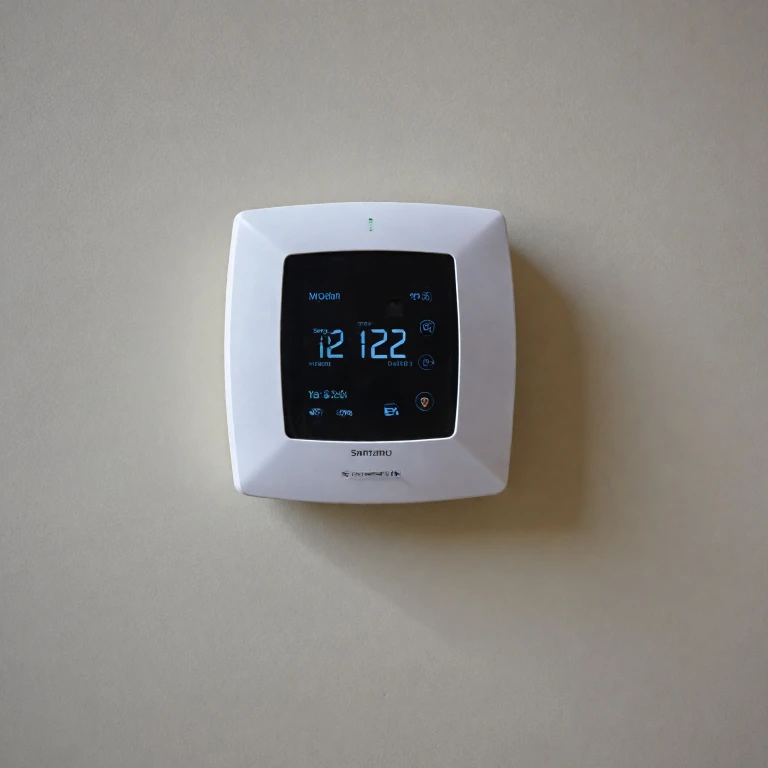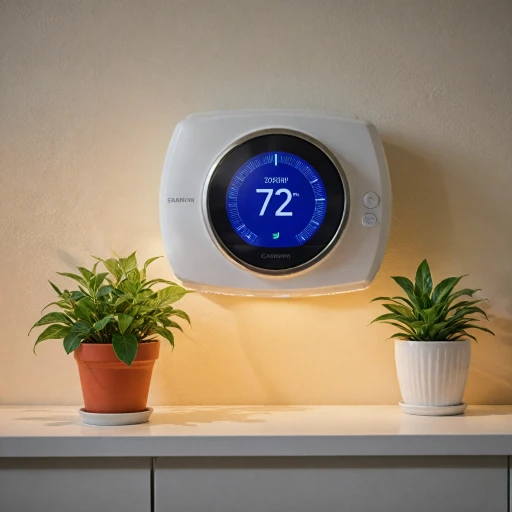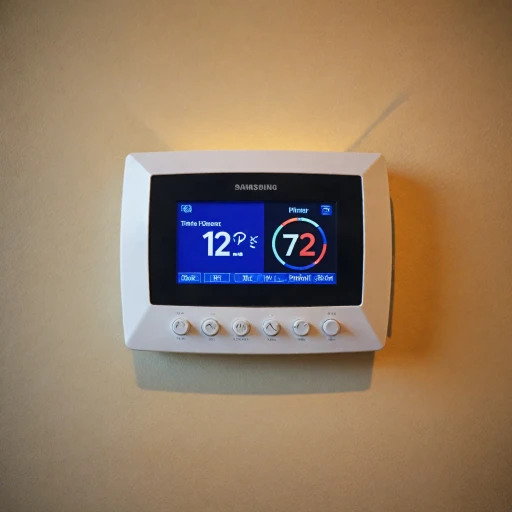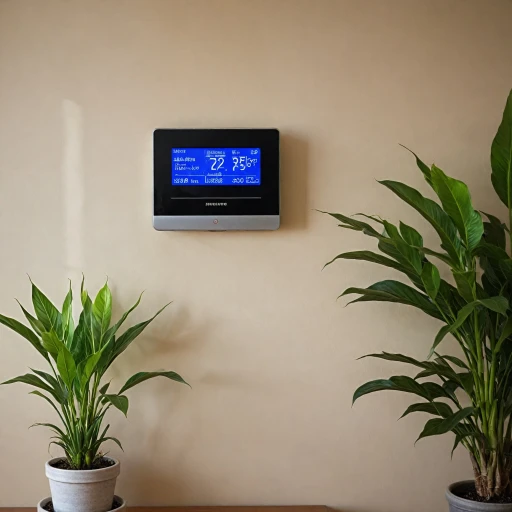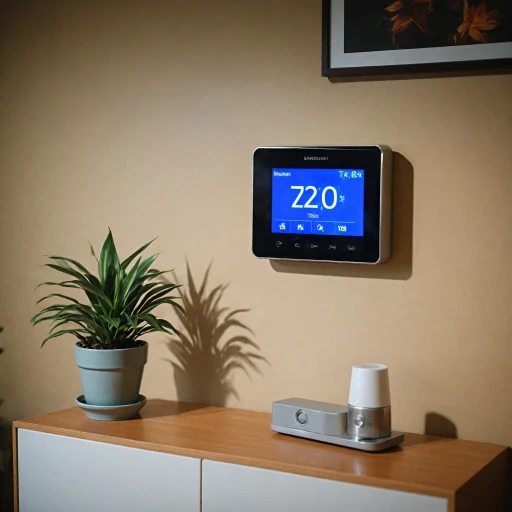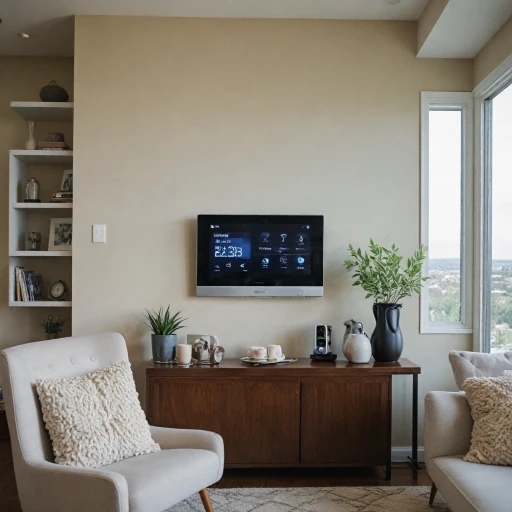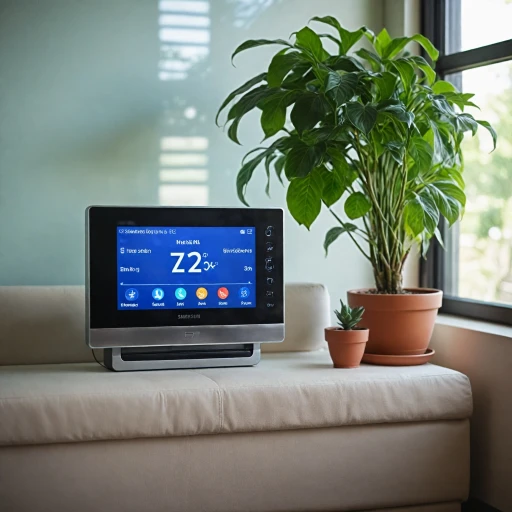
What is Fan-Only Mode?
Exploring the Fan-Only Feature on Smart Thermostats
The Fan-Only mode on smart thermostats, like Alarm.com models, offers an alternative way to manage indoor airflow without engaging the heating or cooling systems. This feature is a valuable part of maximizing your thermostat's efficiency and can be particularly beneficial in various scenarios.
When you activate Fan-Only mode, the fan within your HVAC system circulates air throughout your home, independently of the heating or cooling functions. This means that while the thermostat fan is operational, the thermostat will not adjust the setpoint to heat or cool your home. Instead, it simply moves air, which can help in distributing heat evenly from sources like a fireplace or reducing temperature discrepancies between rooms.
Understanding the basics of this mode also involves recognizing its contrasts with auto mode, where the thermostat fan operates only in conjunction with heating or cooling commands. In Fan-Only mode, you have manual control over the fan's operation, making it possible to tailor airflow patterns according to your needs.
Before choosing this type of mode, it's important to note that continuous fan operation might increase energy usage if not managed properly. However, as you'll learn in other sections, there are strategies to harness this mode to enhance energy efficiency.
Overall, embracing Fan-Only mode means understanding your thermostat settings and system dynamics thoroughly, ensuring you leverage its full potential without unintended consequences. Keep in mind that different thermostat models and versions may have varying functionalities, so referring to your device’s manual and settings, such as those found in top posts from your customer website, can offer more in-depth guidance.
Benefits of Using Fan-Only Mode
Advantages of Fan-Only Mode
When it comes to maximizing the functionality of your smart thermostat, utilizing the fan-only mode is a strategic move. Here are some of the key advantages it offers:- Energy Efficiency: One of the standout benefits of fan-only mode is its capacity to improve energy efficiency. By circulating the air without engaging the heating or cooling system, it can maintain a comfortable room temperature with less energy consumption compared to heating or cooling modes.
- Air Quality: Another significant advantage is the enhancement of indoor air quality. The thermostat fan circulates the air, which can help filter out allergens and dust, contributing to a healthier living environment. This air circulation can be particularly beneficial in homes where air pollutants are a concern.
- Cost-Effectiveness: Because the system uses less energy, it contributes to reduced utility bills. This makes the fan-only mode a cost-effective option for homeowners looking to manage their home’s energy expenses efficiently.
- System Longevity: Operating in fan-only mode allows the thermostat and HVAC system to have less wear and tear, potentially extending their lifespan. This can reduce the frequency of maintenance and repairs, leading to longer periods between service provider visits.
How to Activate Fan-Only Mode on Alarm.com Thermostats
Activating Fan-Only Mode on Your Alarm.com Thermostat
Activating Fan-Only Mode on an Alarm.com thermostat is a straightforward process that can enhance air circulation in your home. The steps to toggle this mode may vary slightly depending on the specific version of your thermostat, but the foundational process remains consistent across most models.
Begin by accessing the main menu: Using the device interface, press the button select to access the main menu options. From here, you can manage various settings, including the fan mode.
Select the desired mode: Navigate to the mode options. Here, you will find multiple choices such as heat, cool, auto mode, and emer mode. Switch to the fan mode by selecting the fan option, which is typically indicated by a fan icon or the label ‘Fan-Only’.
Confirm and apply settings: Once you have selected the fan mode, the thermostat will display any additional options or confirm your new setting. Ensure the mode is activated properly to avoid any false settings that do not align with your needs.
Understanding the nuances: Some advanced versions, like the wave thermostat, may offer additional settings to customize fan cycling. If your system doesn’t activate as expected, double-check the setpoint and other related settings.
If you encounter issues during the activation process, it may be worthwhile to contact your service provider or refer to the thermostat's manual for in-depth guidance. By efficiently utilizing the fan mode, you can enhance air distribution without engaging the heating or cooling features, thus maximizing energy efficiency and potentially prolonging the lifespan of your HVAC system.
Common Issues and Troubleshooting
Addressing Challenges with Fan-Only Mode
Using the fan-only mode on your thermostat can be a breeze, but occasionally, you might encounter some hiccups. Let's dive into the common issues and troubleshooting tips to help you enjoy a cool, comfortable environment without disruptions.- Thermostat Not Responding:
- Ensure that your system is properly connected and that there are no power outages affecting the device. It might sound simple, but checking the power source is always a good starting place.
- If the thermostat still won't respond, inspect the device for any firmware updates on your ADC (Alarm.com) platform. Updating to the latest version can solve many glitches.
- Inconsistent Room Temperature:
- The fan-only mode often circulates air to maintain airflow, not to adjust temperatures. Double-check the room temperature setting and setpoint to ensure that no other mode (like heating or cooling) is affecting the system.
- Consider switching to auto mode temporarily if the issue persists, as this might help reset the device’s functioning.
- Unexpected Noise or Vibration:
- Unusual sounds might be due to debris near the fan or vents. Inspect these areas to make sure they're clean and unobstructed.
- Some wave thermostats come with different types of fan speed settings and turning fan operation can produce varying noise levels. Adjust the fan mode through your thermostat’s settings to find a quieter operation.
- Display Errors:
- Often, errors displayed are related to connection or data issues coming from the service provider. Your thermostat will display error codes, so referencing your specific model’s manual through your customer website can provide solutions.
- For false data or null errors, resetting the thermostat by pressing the control button can often rectify the problem.
- Fan Fails to Activate:
- Check your desired mode selection to ensure fan-only has been properly engaged, as it’s easy to mistakenly set it to the wrong mode with one press button error.
- If problems persist, reach out to your service provider’s support service for further troubleshooting.
Comparing Fan-Only Mode with Other Modes
Contrasting Fan-Only Mode with Heating and Cooling Modes
When discussing different modes on your smart thermostat, it's essential to recognize the distinctions between Fan-Only Mode, Heating, and Cooling Modes. This understanding can significantly improve how you manage your home’s climate control system. In Heating Mode, the thermostat activates the heating system whenever the room temperature is below the setpoint you've selected. Similarly, Cooling Mode works the same principle, except it will kick in when the temperature exceeds your desired setting. These modes are designed to focus on maintaining specific temperature ranges based on your settings and environmental factors, utilizing various heating and cooling systems in your home. On the other hand, Fan-Only Mode stands in contrast by focusing solely on air circulation rather than altering the temperature. It does not command the heating or cooling elements of your HVAC system; it only activates the fan. This wave of fresh air can help distribute existing conditioned air throughout your home without needing to engage either heating or cooling systems.Understanding Auto Mode Versus Fan-Only Mode
Auto Mode presents a blend of heating and cooling operations to maintain your chosen temperature automatically. The thermostat will toggle between Heating and Cooling modes as needed to sustain your selected setpoint. Essentially, it manages room conditions without constant manual adjustments. Fan-Only Mode, as previously mentioned, leaves out the system’s temperature-changing capabilities and focuses on air movement alone. When comparing both, Auto Mode is more comprehensive, adjusting the room’s temperature according to your preference. Contrarily, Fan-Only Mode may be more suitable when temperature modifications are unnecessary, but air distribution or air quality improvement is desired.Emer Mode Considerations
When it comes to emergency settings or Emer Mode, this type of mode is generally available for specific HVAC systems, often related to heat pumps. Emer Mode prioritizes utilizing an alternative heat source in case the primary system fails or is insufficient during intense cold conditions. In juxtaposition, Fan-Only Mode does not alter temperature conditions directly. In summary, Fan-Only Mode offers versatility in air distribution without altering the ambient temperature, making it a distinct option from both the heating/cooling and emergency configurations your smart thermostat supports.Maximizing Energy Efficiency with Fan-Only Mode
Boosting Energy Savings with Fan-Only Mode
Using the fan-only mode on your smart thermostat can lead to significant energy savings. This function allows your thermostat to circulate air without activating the heating or cooling system, resulting in reduced energy consumption. Here's how each element plays a role:- Thermostat and Fan Mode Efficiency: By allowing just the fan to operate, the device utilizes a fraction of the energy, making it an efficient choice for maintaining room temperature when full heating or cooling isn't necessary.
- Maximizing System Performance: With fan-only mode, the ADC system keeps air moving without the added energy cost of running the furnace or air conditioner. This can result in noticeable energy savings, especially in moderate climates where extreme temperature control is less needed.
- Balancing Comfort and Costs: You can enjoy a comfortable home environment by setting the wave thermostat to fan mode, reducing the need for costly heating or cooling cycles. This reduction in system operation reduces strain on the system, prolonging its lifespan and maintaining optimal performance.
- Strategic Usage: Consider using fan-only mode during transitional seasons or when outside temperatures are mild. This strategic approach allows for maintaining air circulation and comfort, while keeping energy costs at a minimum.
- Adjusting Setpoints for Efficiency: By adjusting the thermostat setpoint to an efficient level when using the fan mode, you can further enhance your energy efficiency. This will ensure that the thermostat fan function is used optimally, providing comfort without unnecessary energy expenses.
